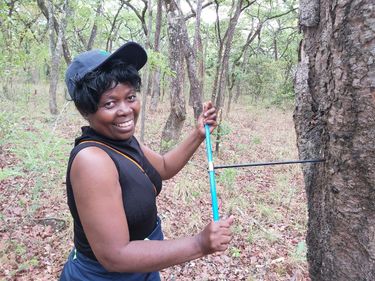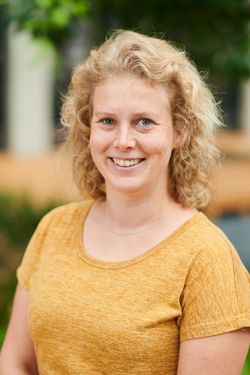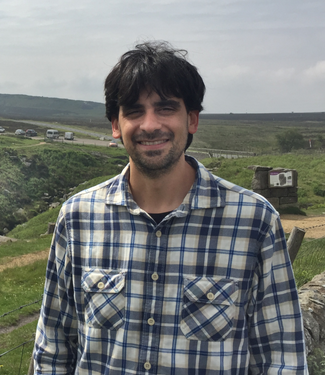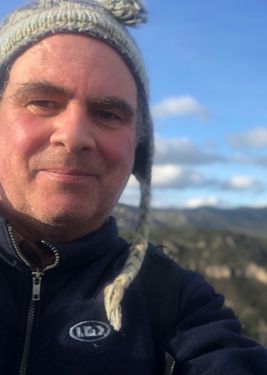
Sessions in which Peter Marcis participates
Wednesday 29 June, 2022
Increasing frequency of droughts strongly affect the available soil water. Lower water availability was often reported to reduce radial growth not only in climate-limited, but also in optimal areas of tree species distribution. Sampling strategies in dendrochronology focus on specific sites, often in climate-limited conditions. Using tree ring samples collected within National Forest Inventories provides an opportunity to assess growth-climate responses statistically representative o...
Sessions in which Peter Marcis attends
Monday 27 June, 2022
Blue Intensity (BI) is a cost-effective analytical method for measuring relative wood density in the rings of conifer tree species. Since early concept papers in the 1990s/2000s, there has been a recent explosion in the application of this method for both dendroclimatology and historical dating as well as other dendro-disciplines. The beauty of BI is that the analytical costs, mainly related to the cost of a h...
Blue Intensity (BI) is a cost-effective analytical method for measuring relative wood density in the rings of conifer tree species. Since early concept papers in the 1990s/2000s, there has been a recent explosion in the application of this method for both dendroclimatology and historical dating as well as other dendro-disciplines. The beauty of BI is that the analytical costs, mainly related to the cost of a h...
Tuesday 28 June, 2022
Africa is faced with a number of challenges including climate change and ecological disturbance due to various anthropogenic activities. These problems adversely affect the forests and also ecosystem services. My appreciation for the forests motivated me to pursure my undergraduate studies in Forestry. I first applied dendrochronology during my PhD research which focused on understanding the climate change vulnerability of the Zambezi teak forests in Zambia. However, lack of research facil...
Tree-ring time series provide long-term, annually resolved information on the growth of individual trees. However, public tree-ring archives contain a considerable portion of data collected from trees that have been selected with specific research questions in mind (e.g., for climate reconstruction). This makes these archives a biased representation of the sensitivity of forest ecosystems to ongoing climate variation (e.g. temperature, precipitation), including non-stationarity (i.e....
Tree-ring time series provide long-term, annually resolved information on the growth of individual trees. However, public tree-ring archives contain a considerable portion of data collected from trees that have been selected with specific research questions in mind (e.g., for climate reconstruction). This makes these archives a biased representation of the sensitivity of forest ecosystems to ongoing climate variation (e.g. temperature, precipitation), including non-stationarity (i.e....
Wednesday 29 June, 2022
Dendrochronology is considered one the most precise of all the scientific dating techniques. However, it requires long sequences of tree rings and a master record for both the species and region in question. At the University of Groningen, we have been pioneering a new approach to dating that combines the precision of dendrochronology with the versatility of radiocarbon dating. It relies on the detection of spikes in the annual radiocarbon record, thought to b...
Current and projected changes in climate are estimated to be from 10 to 100 times faster than the natural adaptive capacity of trees whose generation times are long. As extreme climatic events are becoming more frequent and exert a strong selection pressure on tree populations, there is an urgent need to better characterize the genetic variability involved in the response of trees to climate. There is currently a lack of knowledge on the role of genetic variability in tolerance to climatic...
Fire-dependent red pine (Pinus resinosa Ait.) vegetation communities in the central Appalac...
Thursday 30 June, 2022
How old are tropical trees? This fundamental question has long driven the curiosity of laymen and scientists. But only recently, a great number of studies conducted by many brave dendrochronologists resulted in a significant tree-ring-based knowledge that allows us to start accurately estimating tree ages across the globe. As science goes, not only knowing the longevity of tropical trees is essential to understanding forest dynamics and its role in biogeochemical cycles, but one must also ...
In their book chapter in 2011 Gagen et al. (2011) highlighted the need for stable isotope dendroclimatology to move beyond studies that simply demonstrate ‘potential’. This symposium, more than a decade since this publication, will focus on dendrogeochemical studies that demonstrate that the field has moved beyond studies focused on ‘potential’. In particular, this session will strive to identify compelling new insights into unique aspect...
A gap of millennial tree-ring data suitable for dendroclimatology has long been evident in the North American boreal forest. In my talk, I will describe the adaptive approach we have developed to build and improve a data network for millennial dendroclimatology in the eastern Canadian taiga. Recurrence of stand replacing wildfires is the most important constrain to the elaboration of long tree ring chronologies, which can only be developed away from regions ...
Allies have emerged as key enablers of diversity and inclusivity initiatives in the workplace, in professional associations, and in everyday life. But what is an ally? What skills are required to be an effective ally? How do we hold ourselves and our community members accountable for being effective allies? This symposium will provide a deeper understanding of what it means to be an ally and the skills to help advance allyship as individuals and as a community. Fur...



